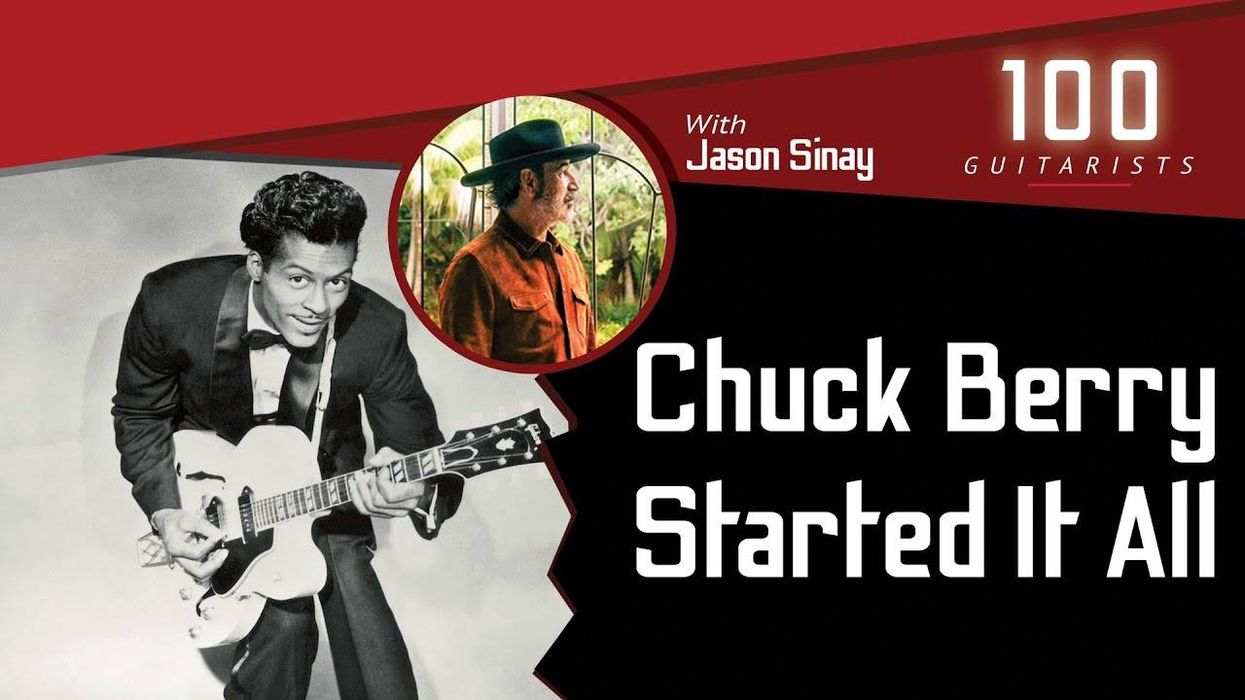Theory: Intermediate<
Lesson Overview:
Understand the basics of arranging for solo guitar.
• Develop your fingerstyle chops.
• Learn how to effectively use chord substitutions. Click here to download a printable PDF of this lesson's notation.
“Amazing Grace” is one of the most popular and recognizable gospel songs ever written. The melody and chord progression are very straightforward and are a great platform to work on arranging for solo guitar. I’ve written two solo arrangements, one beginner and one advanced. The wonderful thing about this song is it sounds great with either a simple or complicated arrangement. The most important thing when playing solo guitar is to focus on the melody and to play with feeling. Let’s look at the first arrangement.
With the first version (Ex. 1), I kept it simple. All of the bass notes can be played with the thumb and the remaining notes played with your index, middle, and ring fingers. Home base is your standard open-position C major chord shown in measure 1. Note that the pickup to measure 1 and the 3 in the melody are both played on open strings. In measure 2, the Cadd9/E chord is a nice transition to the F chord. It works because it’s an inversion of a C chord that allows the bass note to move stepwise to the target chord (F).
In measure 3, the F# diminished 7 chord is used to connect the F to the C/G (another inversion of C major). This use of inversions, or triads with either the 3 or the 5 of the chord in the bass is a staple of gospel and stems from the heavy classical influence of early hymnal music. Look to measure 6 and we’ll see a D/F# chord. Although not in the key of C (only D minor occurs naturally), this chord functions as a sub-dominant chord leading to the G. In classical harmony, this is referred to as a V of V chord. Measures 9 through 12 repeat the intro and in measure 14 we harmonize the E over a G chord with a G13. Barre with your first finger to make the transition to the D natural smooth. Remember to focus on the melody and play with as even as possible. Make sure that melody notes and bass notes are rhythmically solid.
Click here for Ex. 1
For the second arrangement (Ex. 2) I used chords more out of the jazz school than classical school. Let’s dive in. The first chord is a G augmented (G–B–D#), a very common way to start a piece of music. Another popular example of an augmented chord in the intro is “Oh Darlin’” by the Beatles.
Off the bat, we can see there are more chords than before and every melody note has an accompanying voicing. Rather than leave the E in measure 1 as part of the C chord I filled it in with a G13. It’s common in jazz to superimpose the V chord over the I chord. In measure 2 we have C major 7 and a C9/Gb. This is an example of a b5 chord substitution. I’m substituting the bass note of C for the b5 (Gb). This works for a few reasons, but mostly because the bass note moves chromatically to F.
In measure 5 we have an E major chord (E–G#–B) that functions as the V chord of A minor which adds more color and movement. Next, the A minor chord is filled in with a walking bass. Over the G chord in measure 7 we use a very common gospel move. After playing the G on beat 1, we move the inner voices up in half-steps. It creates chromatic movement that fits perfectly when heading to the G7 in the next measure. It almost sounds more like a riff than a series of chords.
In measure 8 we again have a b5 chord substitution with our Db7#9—it’s a sub for G13. Measure 9 we’ve upgraded our C major chord to a C6/9. Barre your first finger to get the E and A notes. G13/Ab is just a G13 with a flat 9 in the bass. It leads well to the Gm13 and creates a chromatic sequence in the bass.
We revisit the E–Am move heading into the last phrase by using an inversion to create movement in the outer two voices while the middle note (E) stays the same. With many of these songs, you can play a false ending with the IV chord and resolve later to the tonic, which I did in measures 15 and 16. By reaching over with your thumb to play the bass you can hold the C note of the melody so it sustains over both chords. When playing solo guitar make sure to take it slow and learn the chords one by one. Good luck and have fun!












![Rig Rundown: Russian Circles’ Mike Sullivan [2025]](https://www.premierguitar.com/media-library/youtube.jpg?id=62303631&width=1245&height=700&quality=70&coordinates=0%2C0%2C0%2C0)





